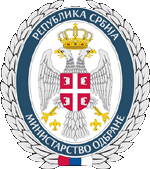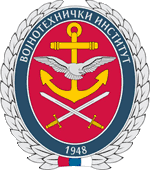|
REPUBLIC OF SERBIA MINISTRY OF DEFENCE
MINISTRY OF DEFENCE Material Resources Sector Defensive Technologies Department
|
LIGHT CONCENTRATION IN SEMICONDUCTOR INFRARED DETECTORS FOR NIGHT VISION BY GRADED ANTIREFLECTION LAYER INCORPORATING PLASMONIC PARTICLES
IHTM – Center of Microelectronic Technologies, University of Belgrade, Republic of Serbia, marko.obradov@nanosys.ihtm.bg.ac.rs Zoran Jakšić IHTM – Center of Microelectronic Technologies, University of Belgrade, Republic of Serbia, jaksa@nanosys.ihtm.bg.ac.rs DANA VASILJEVIĆ RADOVIĆ IHTM – Center of Microelectronic Technologies, University of Belgrade, Republic of Serbia, dana@nanosys.ihtm.bg.ac.rs
Abstract: Enhancement of responsivity and specific detectivity is one of the strategic goals of the technology of infrared detectors for night vision. One of the recently proposed approaches to this purpose is the use of localized surface plasmons polaritons which cause strong localizations of electromagnetic fields, ensuring extreme shortening of the necessary propagation paths of incident radiation. This approach has been obtained as an extension of a similar strategy used for solar cells, through modification by various redshifting approaches. Another method to increase incident optical flux in detectors are antireflective (AR) coatings, among the most efficient ones being those with refractive index gradient. Here we consider the design of monolithically integrated systems for detector enhancement incorporating gradient index AR coatings with embedded plasmonic particles at their high-index surface. Such structures ensure maximum transmission in infrared with simultaneous redshifting of plasmonic resonance, resulting in large localizations of infrared radiation in the near field part overlapping with the active region of the photodetector. We designed and optimized our structures utilizing finite element modeling, starting from Helmholtz equation. We considered available materials and technological approaches to fabrication. We obtained an enhancement of figures of merit of about 30 times compared to the conventional detectors without plasmonic/AR structures. Keywords: Infrared photodetectors, night vision, plasmonics, gradient refractive index, antireflection layers.
|
|||||
|
||||||

